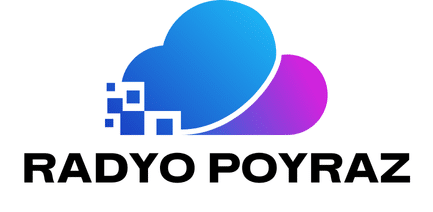In today’s fast-paced world, technology offers innovative solutions to streamline various aspects of our lives, and the healthcare sector is no exception. The administrative workload in the UK’s healthcare system often creates bottlenecks that can delay patient care and reduce efficiency. Developing a mobile app specifically designed to manage these processes can be a game-changer. This article explores the essential steps for creating a mobile app aimed at improving healthcare administrative processes in the UK, providing you with a clear roadmap.
Identifying the Core Problem Areas in Healthcare Administration
Before diving into the development process, it’s crucial to pinpoint the specific administrative challenges within the UK healthcare system. The inefficiencies often stem from outdated systems, manual paperwork, miscommunication, and lack of real-time data access.
A lire en complément : How to use big data to predict and mitigate supply chain disruptions in UK manufacturing?
Administrative tasks such as appointment scheduling, patient record management, billing, and communication between healthcare professionals can be cumbersome. These tasks not only consume valuable time but also increase the likelihood of errors. Recognizing these pain points will help you design an app that addresses the most pressing issues effectively.
For instance, the app could offer functionalities like digital patient records, automated appointment reminders, and streamlined billing processes. By focusing on these areas, you’ll create an app that significantly enhances administrative efficiency and patient satisfaction.
A voir aussi : What are the essential steps for creating a user-friendly mobile banking app in the UK?
Conducting Market Research and Feasibility Studies
Once you’ve identified the problem areas, the next step involves conducting comprehensive market research and feasibility studies. This phase is essential to understand the landscape, assess demand, and identify your competition.
You’ll need to gather data on existing healthcare apps, analyze their strengths and weaknesses, and determine what unique value your app can provide. This research will help you understand user needs, preferences, and expectations. Additionally, feasibility studies will allow you to evaluate the technical and financial aspects of developing the app.
Consider conducting surveys and interviews with healthcare professionals, administrative staff, and patients to gain insights into their pain points and feature requirements. This will help you create a user-centric app that meets the actual needs of end-users. Furthermore, analyzing the regulatory environment and ensuring compliance with data protection laws, such as GDPR, is paramount.
Designing a User-Centric Mobile App
With a clear understanding of the market and user needs, you can proceed to the design phase. A user-centric design is crucial for the success of your app. This involves creating an intuitive, easy-to-navigate interface that caters to both tech-savvy and less tech-savvy users.
Begin by sketching wireframes that outline the app’s layout and flow. Focus on creating a seamless user experience, ensuring that all features are easily accessible and the app’s navigation is straightforward. Consider integrating features such as:
- Appointment Scheduling: Allow patients to book, reschedule, and cancel appointments with ease.
- Digital Patient Records: Provide healthcare professionals with instant access to patient records.
- Billing and Payment Processing: Automate billing processes and enable secure online payments.
- Communication Tools: Facilitate communication between healthcare staff and patients through secure messaging.
Design prototypes and conduct usability testing with a diverse group of users to gather feedback and make necessary adjustments. The goal is to create an app that not only meets functional requirements but is also visually appealing and easy to use.
Developing and Testing the Mobile App
After finalizing the design, the next step is development. This phase involves writing the code, integrating the necessary features, and ensuring the app functions seamlessly across different devices and platforms.
Choosing the right development approach is crucial. You can opt for native app development, which ensures optimal performance but requires separate codebases for iOS and Android. Alternatively, cross-platform development frameworks like React Native or Flutter allow you to create a single codebase that works on both platforms, potentially reducing development time and cost.
Throughout the development process, prioritize security and compliance with healthcare regulations. Implement robust data encryption, secure authentication methods, and regular security audits to protect sensitive patient information.
Once the app is developed, thorough testing is essential. Conduct various types of testing, including:
- Unit Testing: Ensures individual components function correctly.
- Integration Testing: Verifies that different modules work together seamlessly.
- User Acceptance Testing (UAT): Involves real users testing the app to ensure it meets their needs and expectations.
- Performance Testing: Assesses the app’s speed, responsiveness, and stability under different conditions.
Address any issues or bugs identified during testing to ensure a smooth user experience upon launch.
Launching and Marketing Your Mobile App
With a fully developed and tested app, it’s time to launch and market it to your target audience. A successful launch strategy involves several key steps:
- Pre-Launch Marketing: Generate buzz and anticipation through social media, email campaigns, and partnerships with healthcare organizations.
- App Store Optimization (ASO): Optimize your app store listing with relevant keywords, a compelling description, and high-quality screenshots and videos.
- Beta Testing: Conduct a beta test with a select group of users to gather final feedback and make any necessary improvements.
- Launch Event: Plan a launch event or webinar to introduce your app to the healthcare community and demonstrate its key features.
Post-launch, continue to monitor user feedback and analytics to identify areas for improvement. Regularly update your app with new features, enhancements, and bug fixes to keep users engaged and satisfied.
Creating a mobile app for streamlining UK healthcare administrative processes involves several critical steps, from identifying core problem areas and conducting market research to designing, developing, and launching the app. By prioritizing user needs, ensuring compliance with healthcare regulations, and implementing robust security measures, you can develop a mobile app that significantly enhances administrative efficiency and improves patient care.
In summary, the key to success lies in understanding the unique challenges of the healthcare sector, designing a user-friendly app, and continuously refining it based on user feedback. With the right approach, your app can become an invaluable tool for healthcare professionals and patients alike, transforming the way administrative tasks are managed and contributing to a more efficient and effective healthcare system in the UK.






